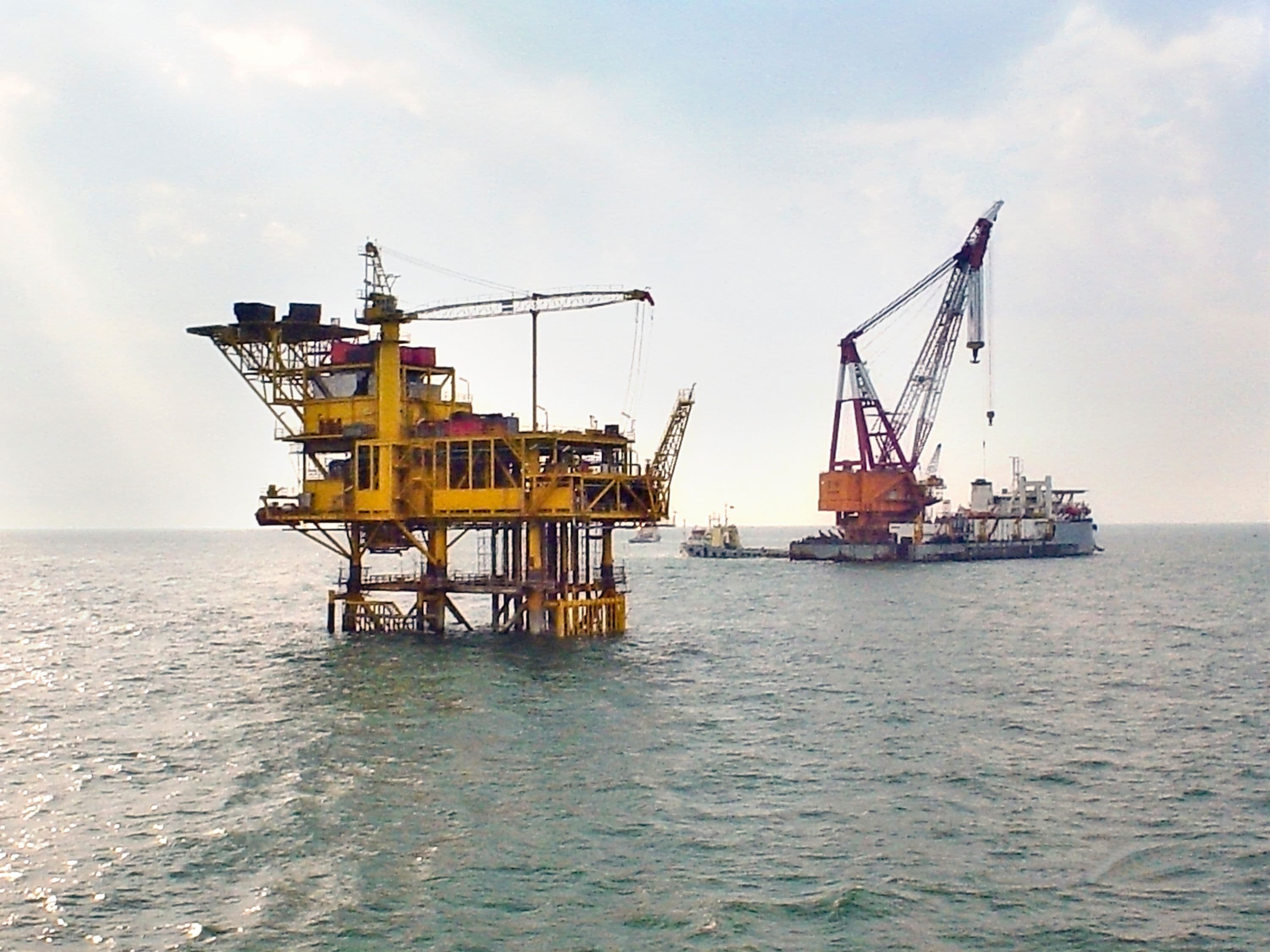
&w=3840&q=75)
Chevron Hermosa Drilling and Production Platform - Engineering, Design
Client: Chevron U. S. A. Inc.
Location: Point Arguello Field, CA, U.S.
Business Segment: Energy Solutions
Industry: Fuels

Executive Summary
Beginning in the early 1980s, Fluor provided engineering design and materials management services for the Hermosa oil and gas offshore production platform in California's Santa Maria Basin. The first platform installed in the basin, it was designed to withstand storms and earthquakes while housing a large-scale drilling operation for the client, Chevron U. S. A.
Client's Challenge
The platform was to be built in a part of the Santa Maria Basin that is 600 feet deep. It needed not only to be properly proportioned but also built with the understanding the area featured significant seismic activity. The platform thus needed to be strong enough to handle heavy storms and earthquakes.
In addition, Hermosa's proximity to Vandenberg Air Force Base, a planned launch site for the Space Shuttle, required special thinking. How to ensure both the platform and crew would be safe if an aborted shuttle booster rocket were to fall in the basin area?
&w=3840&q=75)
Fluor's Solution
We began the assignment by designing what would be a large platform by offshore California standards, 755 feet tall from mudline to helicopter deck. Three decks were planned, as well as 48 well conductors, two drilling rigs, oil and gas separation facilities and living quarters for 90 people.
The platform was designed to withstand a storm with waves up to 60 feet high, as well as remain operational in a "strength level" quake, the type that may happen once every 200 years. The platform was even designed to withstand an "upper-level quake," the kind occurring once in several thousand years.
Finally, the crew quarters were designed to withstand a reflected pressure shockwave of up to 10 pounds-per-square-inch (psi) in strength, in case of a booster rocket landing in the basin.
To work out engineering details, we designed and built a three-eighths-inch-to-a-foot scale model of the platform. Standing nearly six feet tall on its pedestal, the model served as a three-dimensional aid throughout the design process and as a planning aid at the fabrication site for the topsides facility.

Conclusion
Module and jacket fabrication for the platform were finished in 1984. Mechanical completion and jacket installation followed in 1985.
The platform was winding down operations by 2011-2012, well within its allotted lifespan.
The Santa Maria Basin proved to be a successful area for oil drilling, producing 1.84 million barrels in 2003 alone.



&w=3840&q=75)

